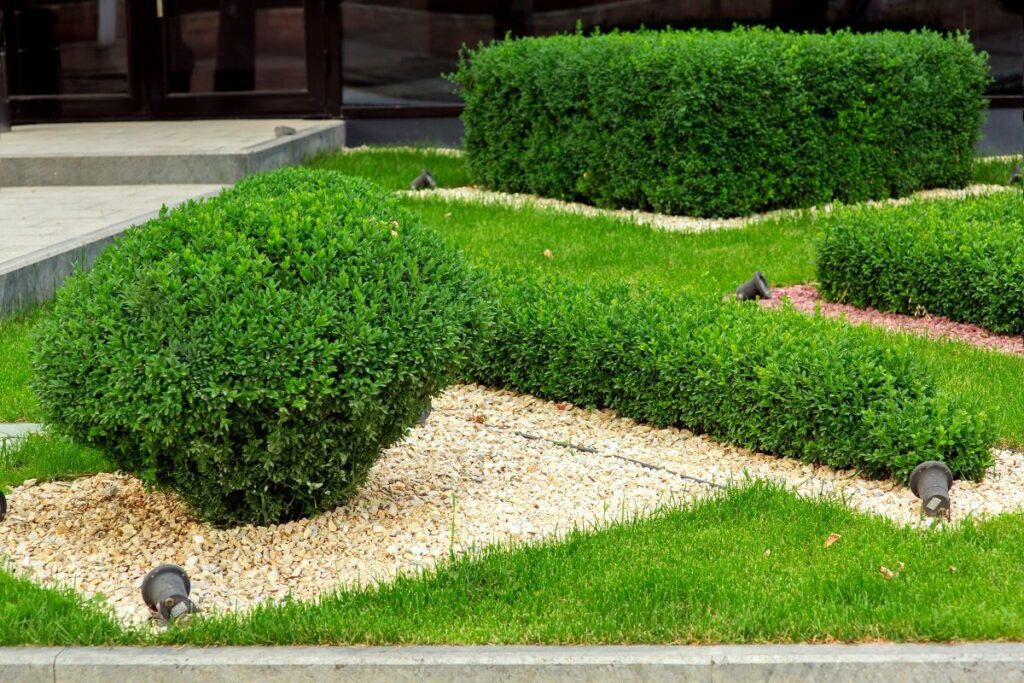Pros and cons of stone mulching in garden beds – part 2

Cheap, resistant and safe. Usually!
Stones are unrivalled for the covering of the garden paths. They do not stop the water absorption such as paved areas while still keeping their aesthetic value. You can step on them or even trample them down. On the other hand, they can be quite unpractical if you want to use a fully loaded wheelbarrow on them. You might sink into them. Obviously, it depends on their fixation in the terrain and the layer thickness.
They are cost effective. In comparison with the mulch that you buy. Should you bother every year with delivering of sacks of wooden mulch or get the stone mulch just once? In total over the years, it is definitely cheaper. And just theoretically, it is also “safer”. In case of a fire near the house, a garden filled with gravel becomes a natural barrier against flames. Any dangers? Just try (or rather not) to ride your lawnmower into a garden bed filled with stones.

Do you like hoeing and raking?
There are people who consider river pebbles, gravel and stones an ideal solution. It is not entirely true: they are perfect for gardens and rockeries, between succulents and xerophytic plants on permanent biotopes. But they are quite limiting on other places. Everywhere where a regular digging, hoeing, replanting, excavating, and spacing out is needed regularly, stones will be a problem.
In the same way that stones can be problematic for wheelbarrows and replanting, they will be a problem for raking of foliage in autumn and any regular sweeping. In these cases, they will not be very useful. It will also show, over time, the need for proper barriers between garden beds and garden paths. Without them, stones are going to get to places where you do not need them.
No weeds, but no life either
Picturesque garden beds filled with gravel and stone, work very well as prevention of the growth of weeds. It has nothing to attach to. And it will really save you a lot of work. Unlike the organic mulch, it does not attract insects. The harmful as well as the useful insect. That can be an advantage or a disadvantage in other cases.
Flowers and shrubs can make us glad be growing and spreading. But the chances that the seeds could pierce through stone mulch are not very high. If you got used to discovering new growths and additions in your garden every year, this will stop with stone mulching.
There are different kinds of stones. Mostly, they have more alkaline (basic) nature. Trees and shrubs mostly prefer acidic soil. Long lasting stone backfill can therefore change the pH of soil and cause dissatisfaction of some of its green inhabitants.
Let there be drought!
Stones heat up in the sunshine and they will definitely not be pleasant to walk on in the summer. They accumulate heat and therefore increase temperatures also at night. Gardens with stone mulch can get unpleasantly hot… and very thirsty. It is hard to say how much water is actually used up by plants in the garden and how much is just used up to cool down the stones. It is an element that can keep water in the soil but paradoxically, it also increases heat and drought in the garden. Another significant objection to stone mulching, by its criticizers, is that, unlike the organic mulch, it does not really bring anything useful to the growing plants. No benefit in the form of nutrients, increase of organic material in soil, aeration. Although it does not do any harm, it definitely does not improve the health of gardens.

Source: www.ceskestavby.cz
